The Covid Diaries 85 – IWM Duxford
A review of the Imperial War Museum (IWM) Duxford. What a lot to see, at this expansive satellite of the IWM focused (mostly) on air transport.

Those Magnificent Men (And Women) In Their Flying Machines
This post marks the beginning of an excursion to Cambridgeshire which the Salterton Arts Review undertook recently. Over the next week or so, we will be exploring museums and historic sites in Cambridge and Ely. Before we do that, however, we will be taking a look today at the Imperial War Museum‘s outpost in Duxford, about eight miles south of Cambridge.
Duxford as an air field dates back to the First World War. During WWII, Duxford was an RAF and American Air Force base which participated in the Battle of Britain amongst other achievements. Today, there is an awful lot going on at Duxford. Even though we couldn’t see some exhibits due to social distancing when we went, there was:
- A gallery on air and space travel
- A hangar where you can watch airworthy planes being worked on/restored
- Some of the remaining buildings from when Duxford was an RAF base, including a recreated 1940s Operation Room
- Air and Sea – a hangar of boats and maritime aircraft
- A hangar of Battle of Britain and Cold War planes
- The American Air Museum
- A museum on Land Warfare
- Historic commercial aircraft lined up alongside the airfield
- Historic aircraft including Spitfires and Tiger Moths taking off and landing throughout the day (with you inside, for a price)
This is most definitely a museum you want to spend a full day at. Let’s now take a look at each of the sights that I saw on my day at IWM Duxford.
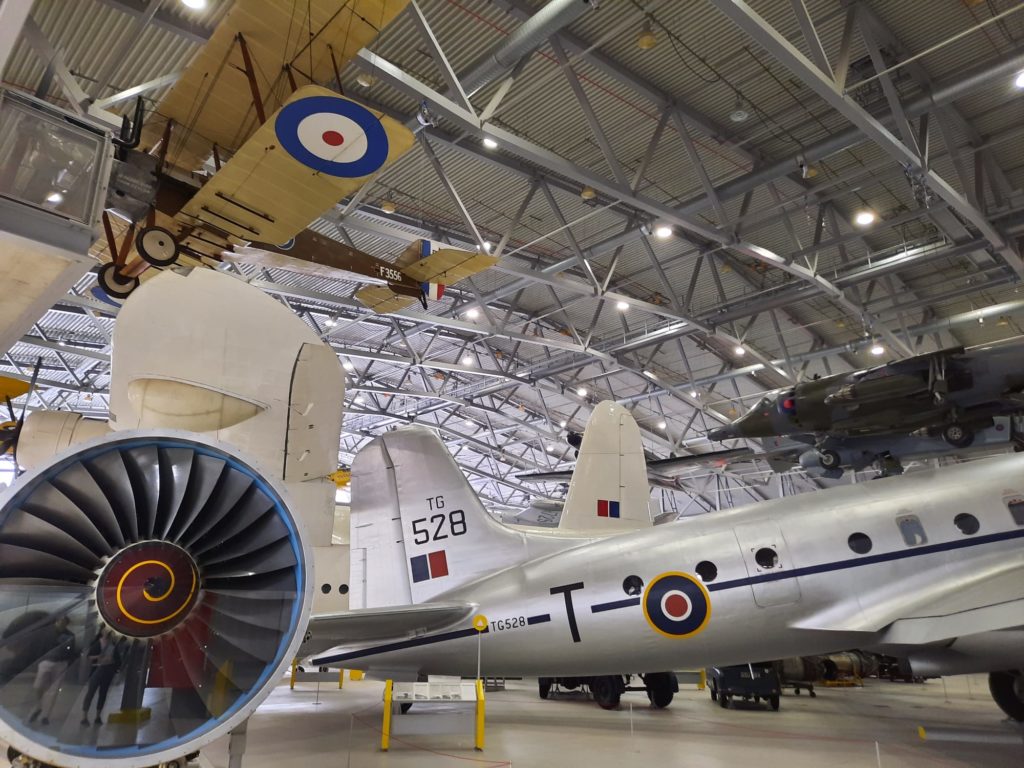
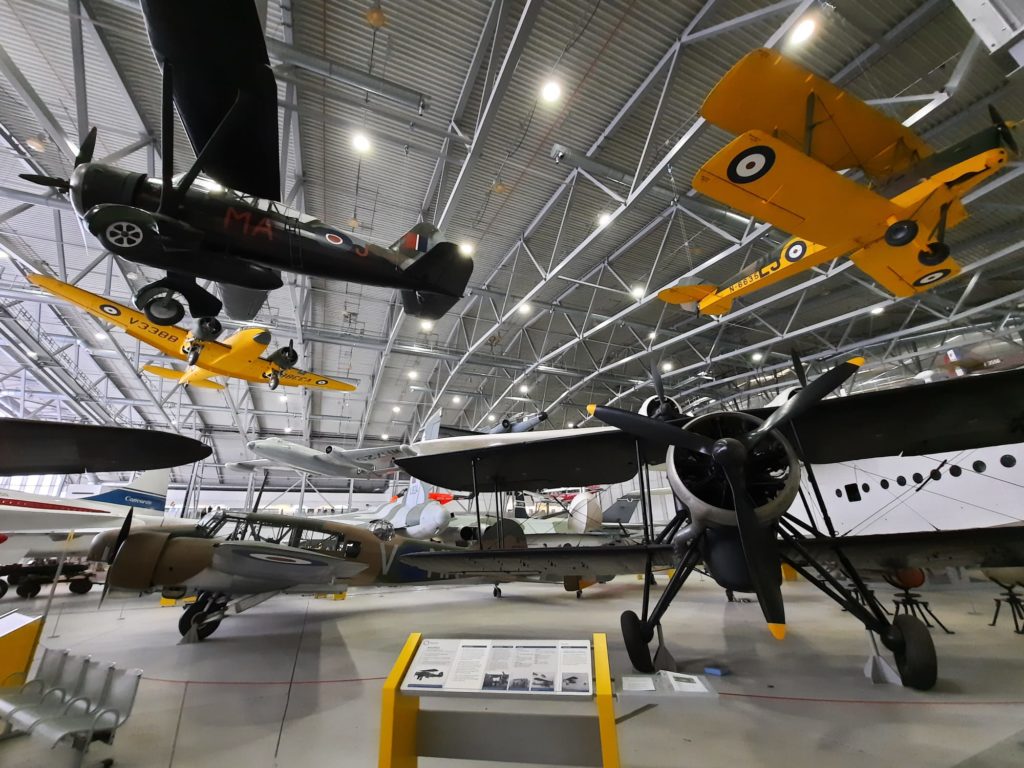
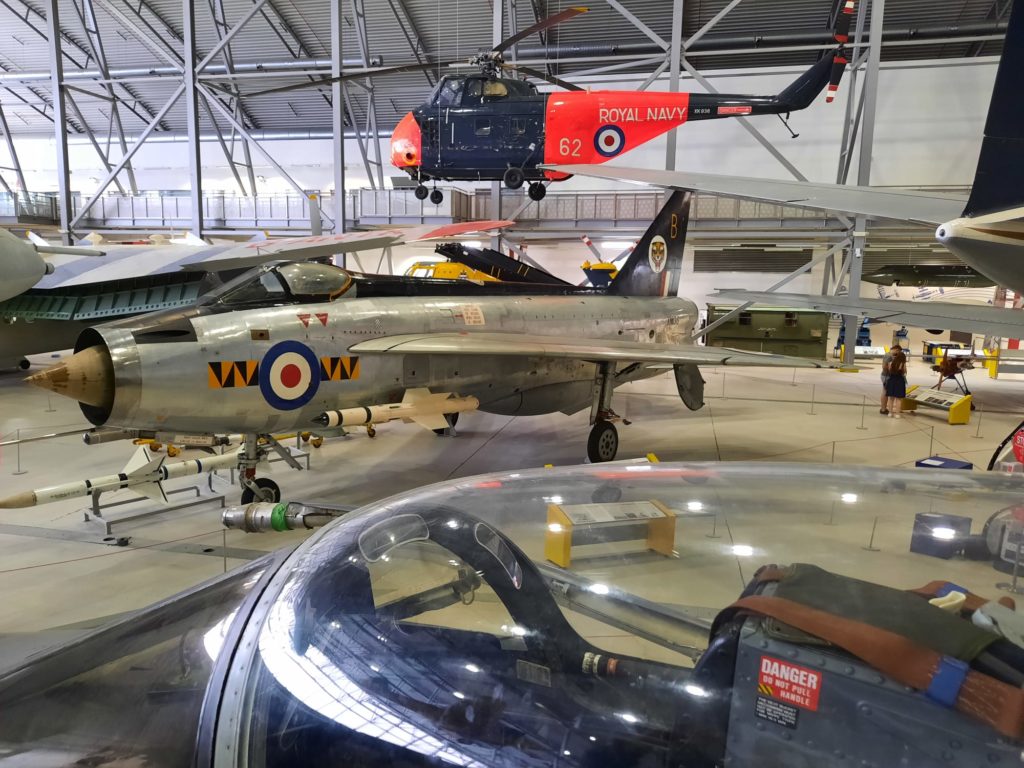
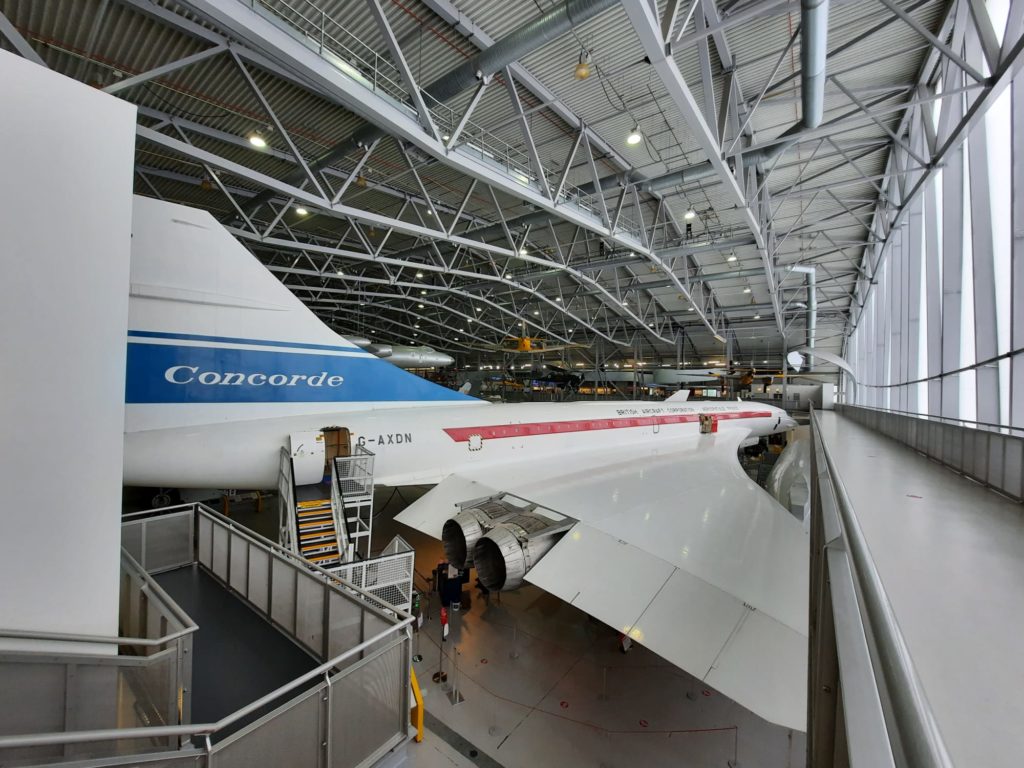
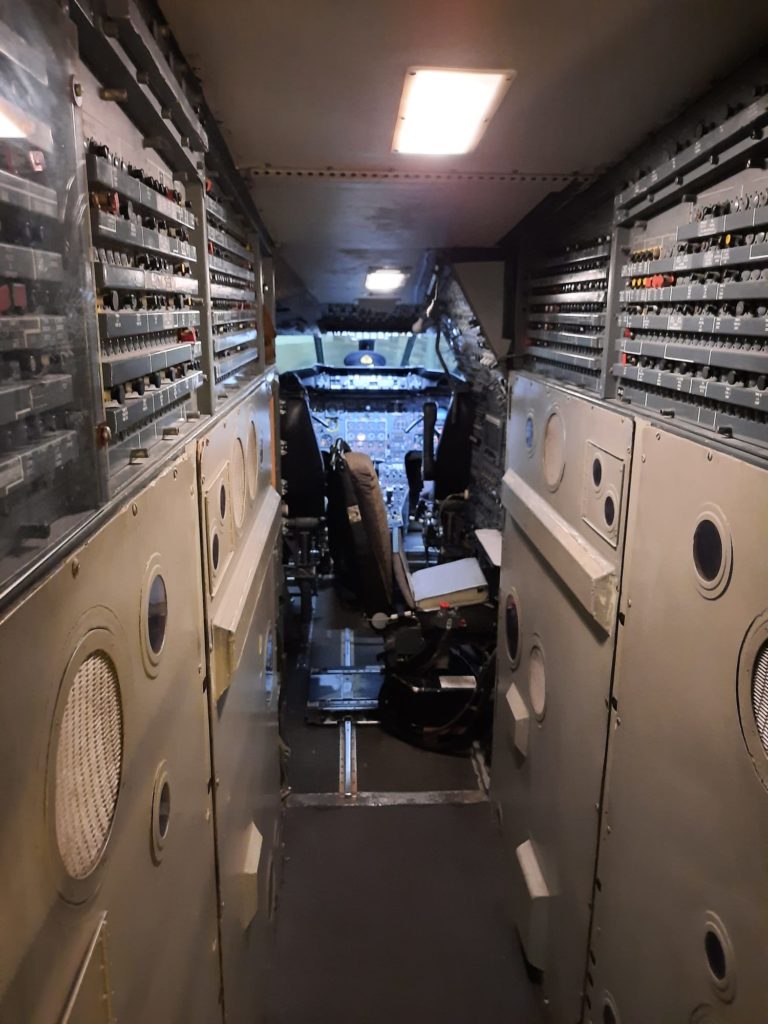
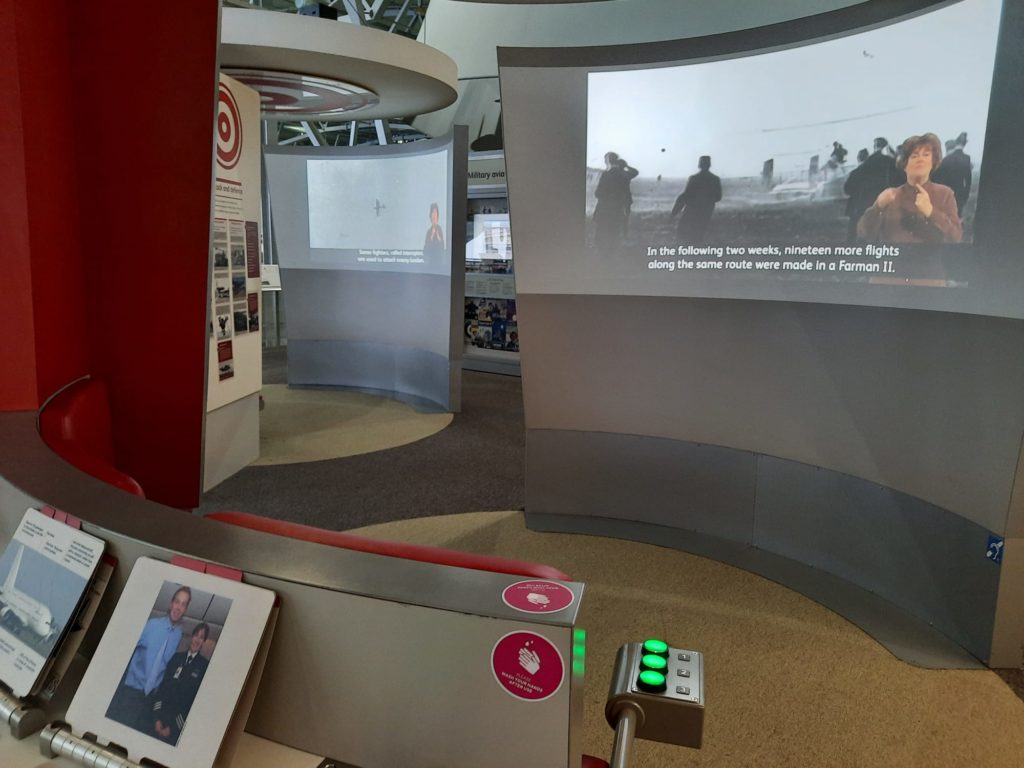
AirSpace
For many this is their introduction to IWM Duxford, as it was for us. AirSpace focuses on the technology of aircraft and the history of aviation in Britain. It is a vast hangar full of airplanes, a couple of helicopters, engines and other aircraft components, and a mezzanine floor with background information and interactive exhibits.
Under normal circumstances, you can go inside several of the planes to see them up close. When we visited that wasn’t possible, with the exception of a Concorde. The Concorde has been restored to its appearance when it was completing test flights (think lots of gadgets and equipment inside). A one-way system was in operation during our visit, as well as a turnstile to control visitor numbers. It was very interesting to see inside an advanced technology no longer in operation. Generally, however, I didn’t feel I was missing out by visiting during Covid. There were a couple of cockpits you could still peer into, as well as a plane whose undercarriage was open so you could get up close to it.
I enjoyed AirSpace as a way to set the scene for the day. I can often feel overwhelmed by war stories or war films, so liked the focus on technology and innovation in this first display. The mezzanine of interactive displays was pretty fun, and actually a highlight for me (more on this at the end of the post). I had the good fortune of going to the Smithsonian National Air and Space Museum outside Washington D.C. a couple of years ago, and this was the section that reminded me the most of this experience – a huge display of different aircraft hung at various heights to get different viewpoints, with a focus on technology, innovation, and historic moments. It would be enough to visit just this even without all the rest we are about to explore!
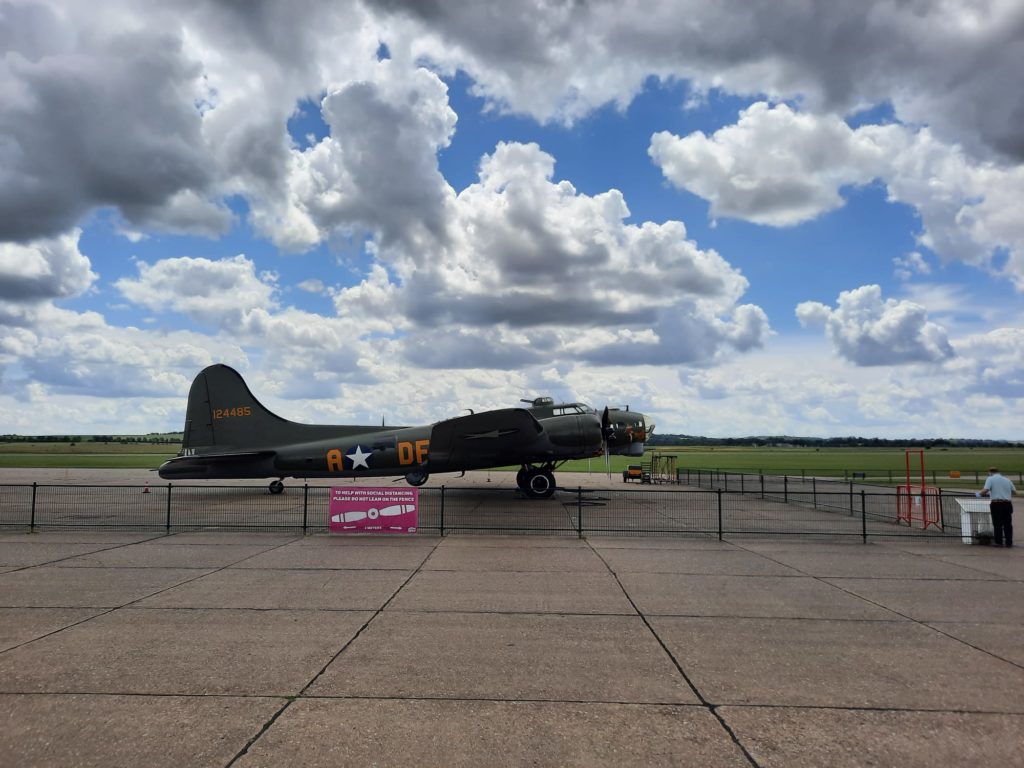
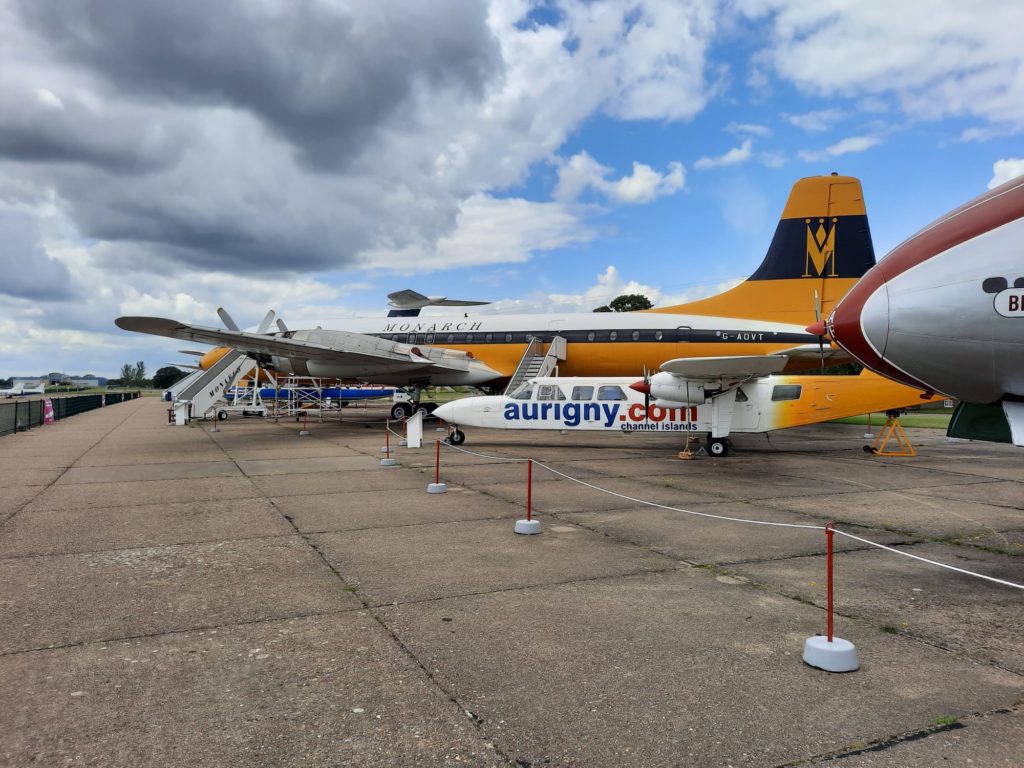
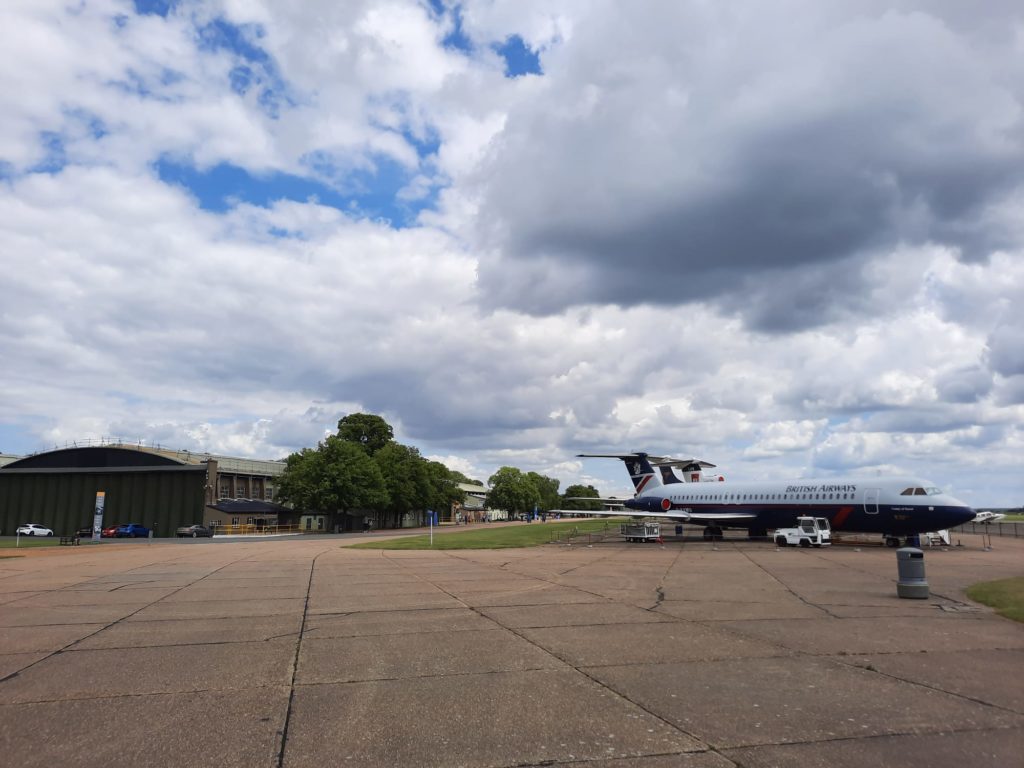
Airfield / Commercial Planes
For many, this is a highlight of their day. Duxford is still a working airfield, and you can see planes taking off and landing throughout the day. Most of these are historic light aircraft, and for a fee you can even take off yourself for a scenic flight in a Tiger Moth or Spitfire. It makes a lovely atmospheric background to hear the planes’ engines as you walk around Duxford, and helps to contextualise the history of the place itself.
As well as this, alongside the airfield is a row of commercial aircraft. I think that you can normally go inside at least some of them (?) but when we visited you could only walk around the outside. The planes are in the livery of various British airlines past and present, including BEA, BOAC, Monarch, Aurigny and British Airways. Information panels tell you about the airline and the type of plane, including the number of miles this specific aircraft has flown. There is a touch of glamour about some of the older planes which gets the imagination going.
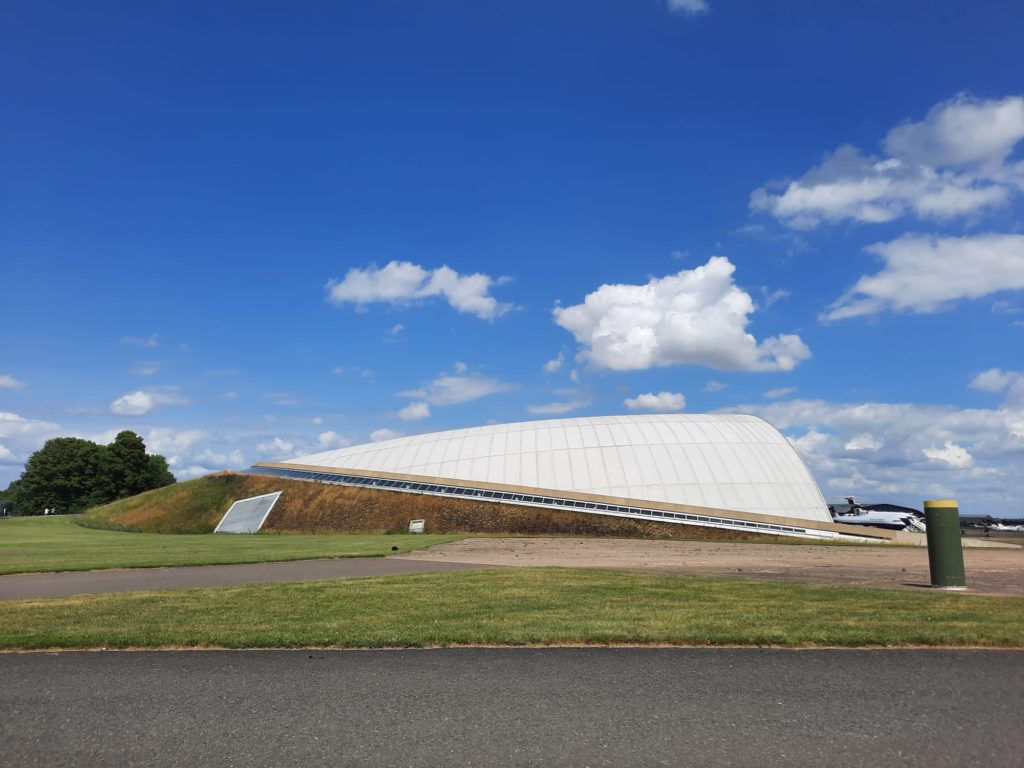
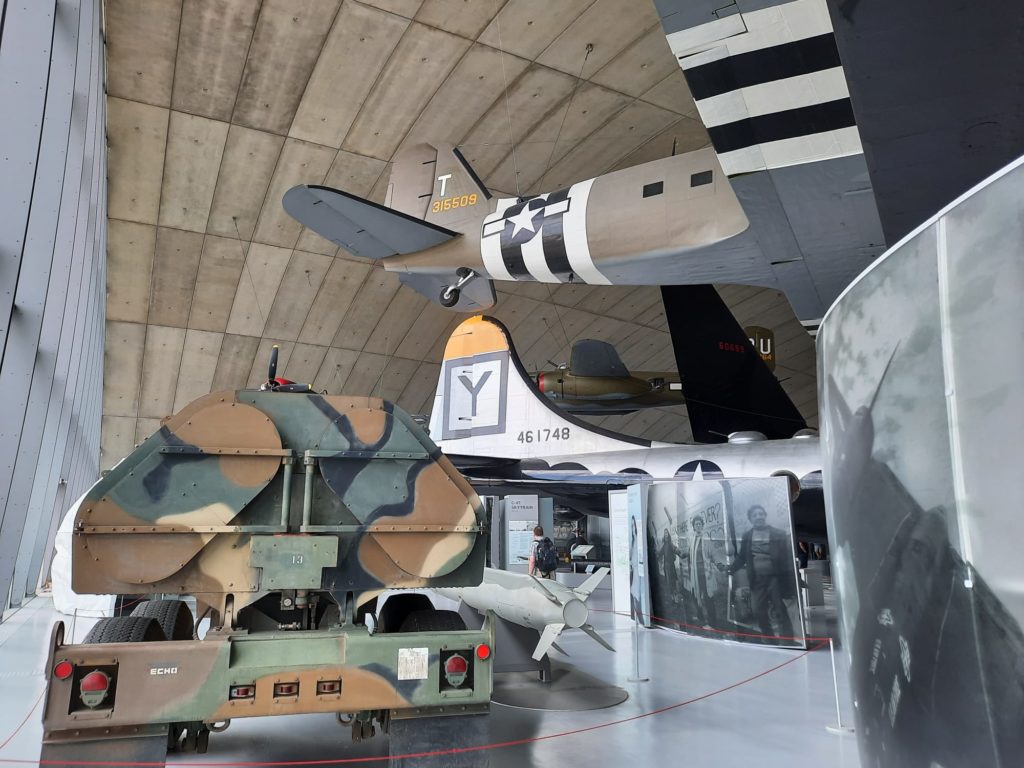
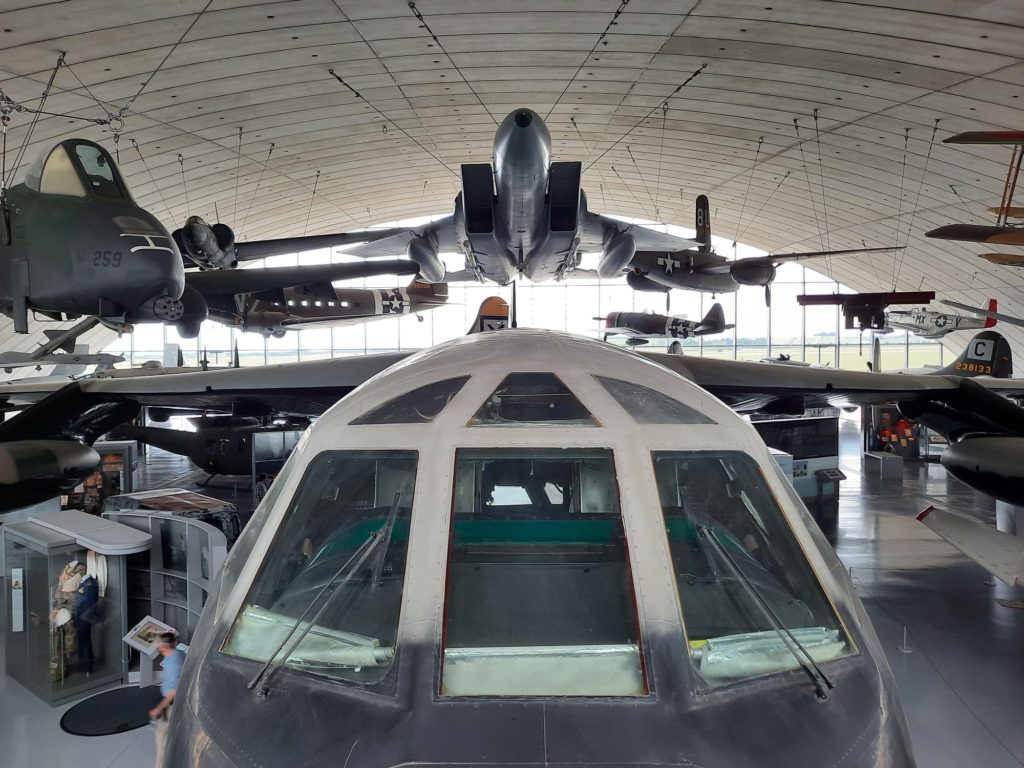
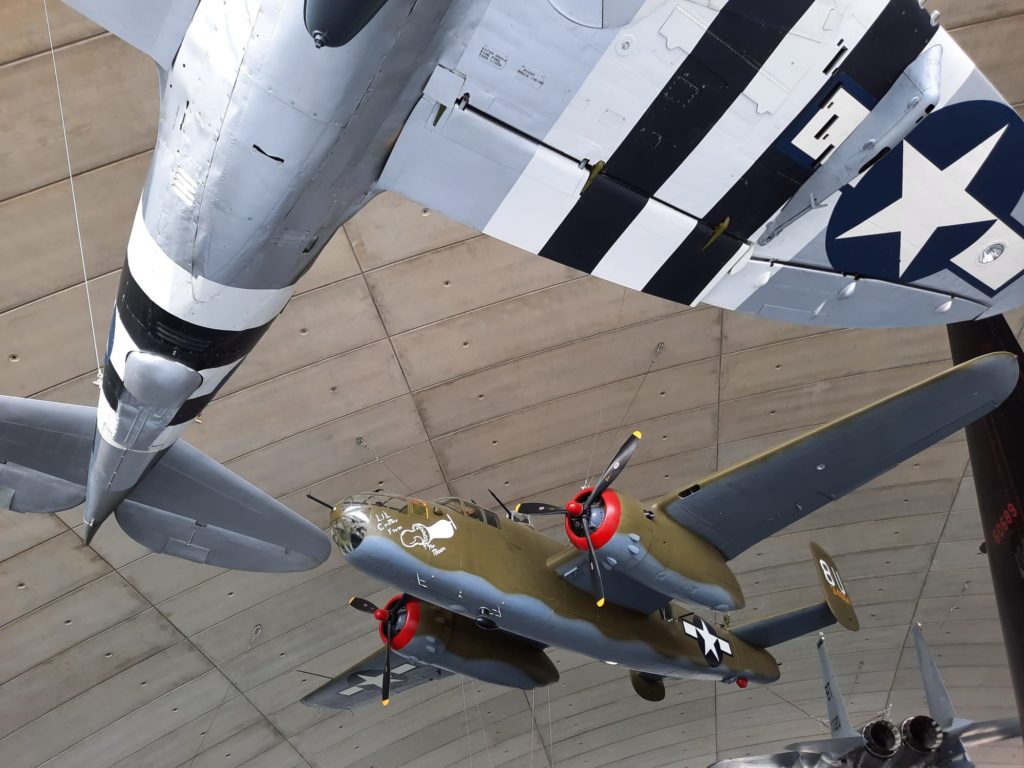
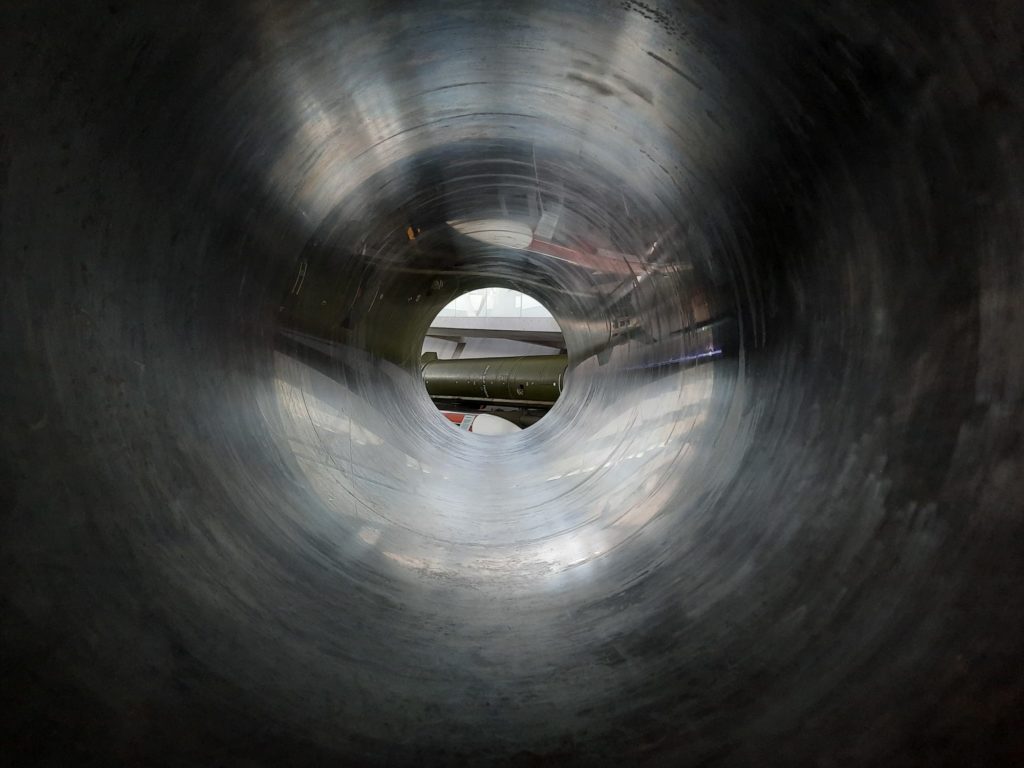
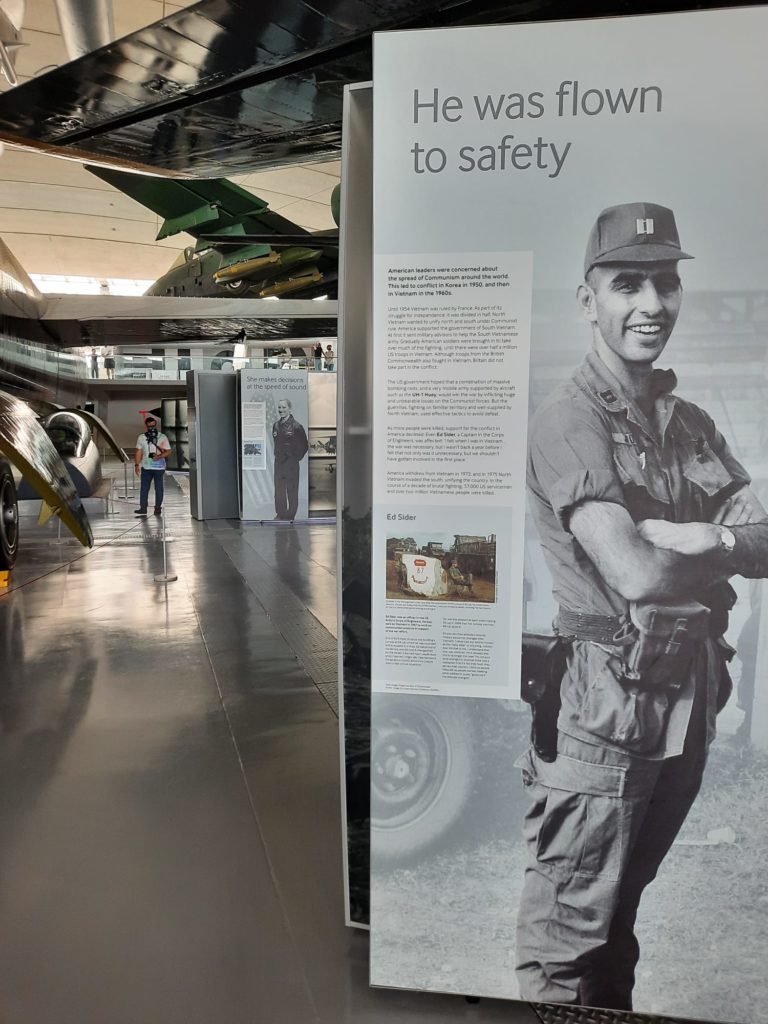
American Air Museum
This is really where the war aspect of the Imperial War Museum Duxford began for me. The American Air Museum tells the story of British and American wartime collaboration. Basically a museum of the ‘special relationship‘. And very relevant to IWM Duxford which was an American air base from 1943-45.
Like AirSpace, the format is a big hangar-type building (although this time designed by Norman Foster). You can see planes from all different angles, including a massive B-52 and a Lockheed U-2C spy plane. Coincidentally we saw another one of these in Cuba which was shot down during the Cold War. A very different museum context, however!
Compared to AirSpace, the American Air Museum focuses a lot more on personal stories. We meet individuals who have either been in active combat, been impacted by war, or worked in related jobs like as a riveter or journalist. There are an admirably large number of different viewpoints. You could spend hours in here reading all the information, watching videos and looking at objects. As it was, I wandered off once I’d had my fill of war stories, to have lunch while watching the airfield.
Did it feel particularly American? Well, compared to the rest of IWM Duxford, yes it did. There were a lot more American voices and stories here, but at the same time I found that American aircraft are so pervasive in films and television that it didn’t seem a surprise to see them here.
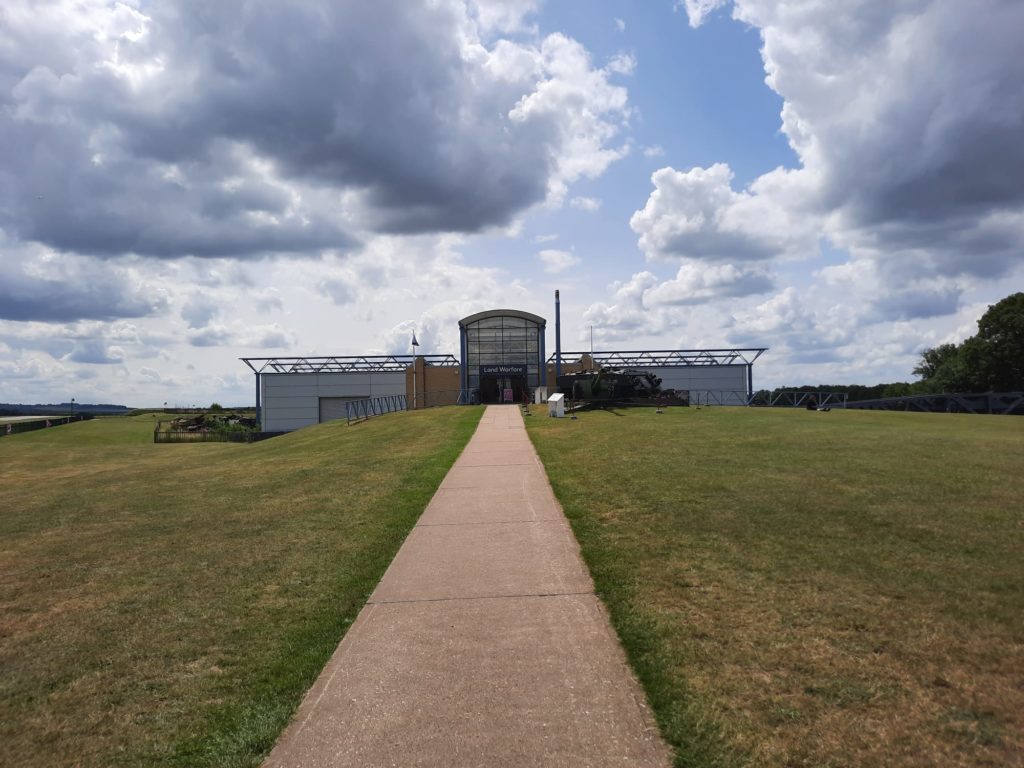
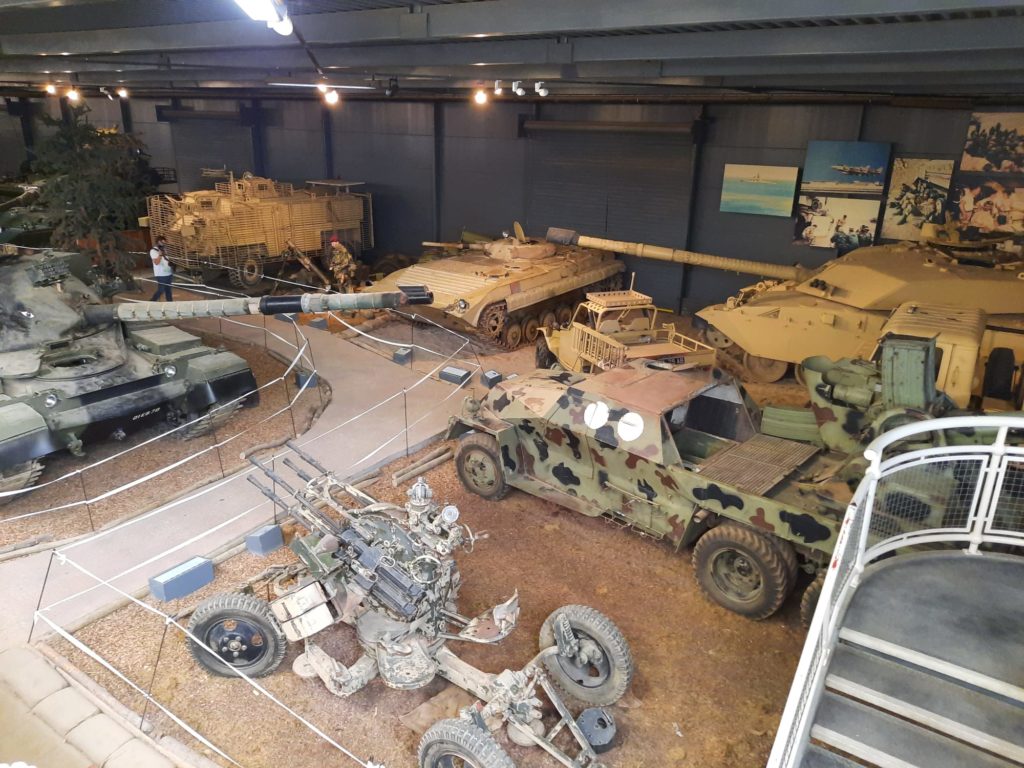

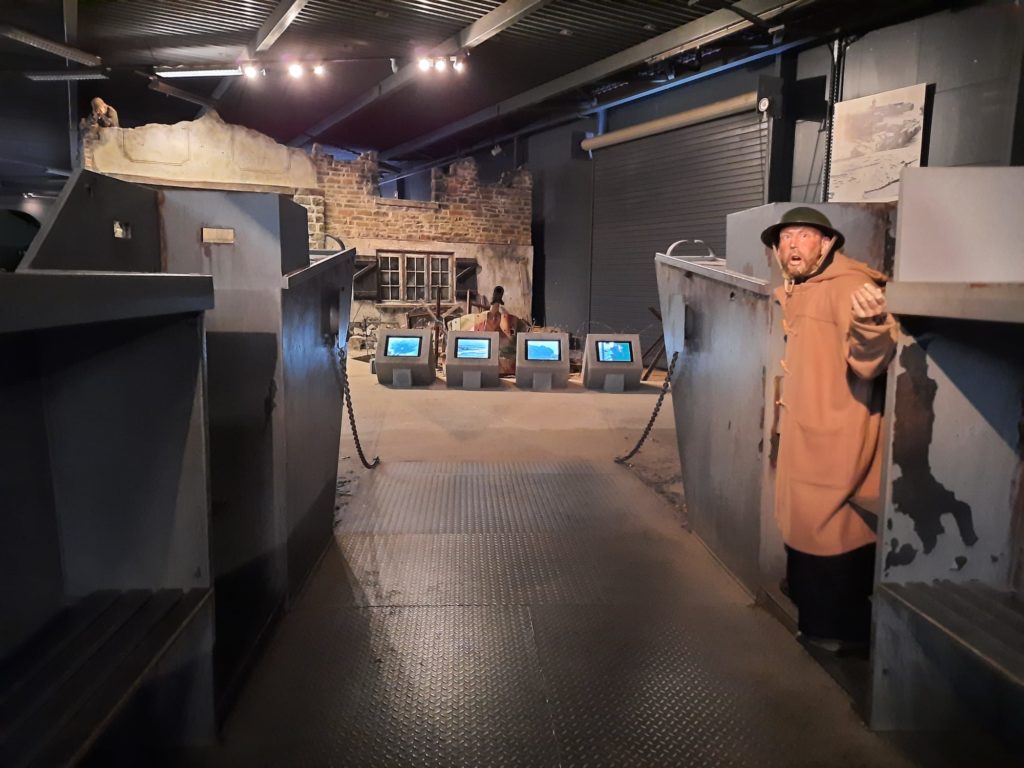
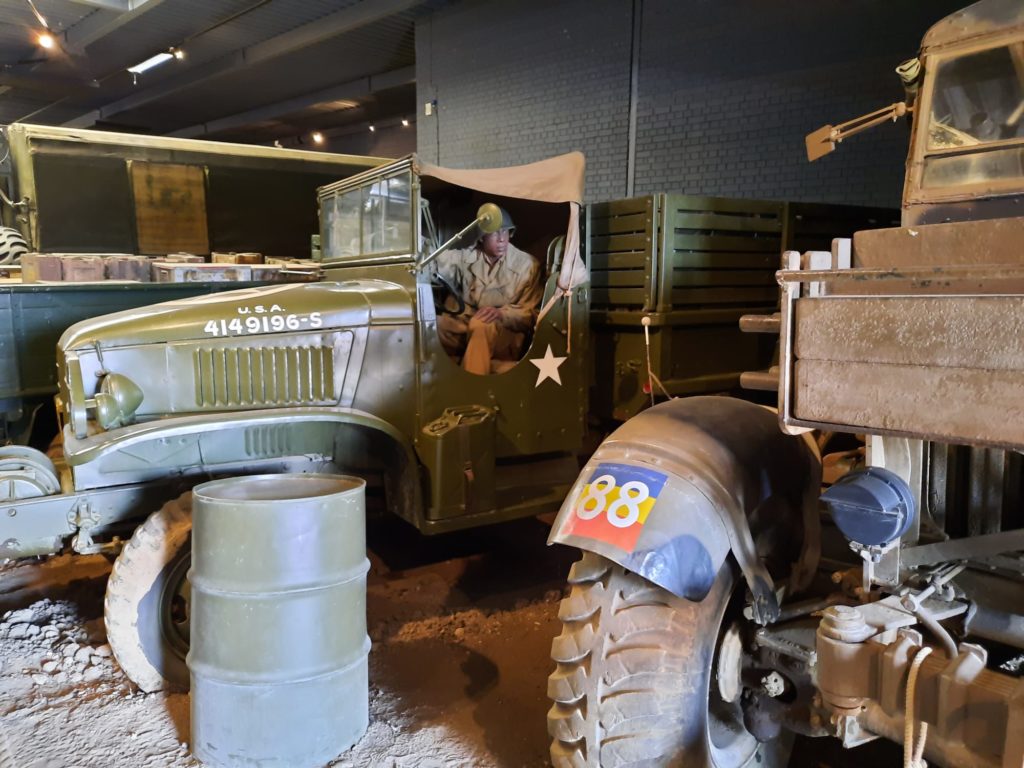
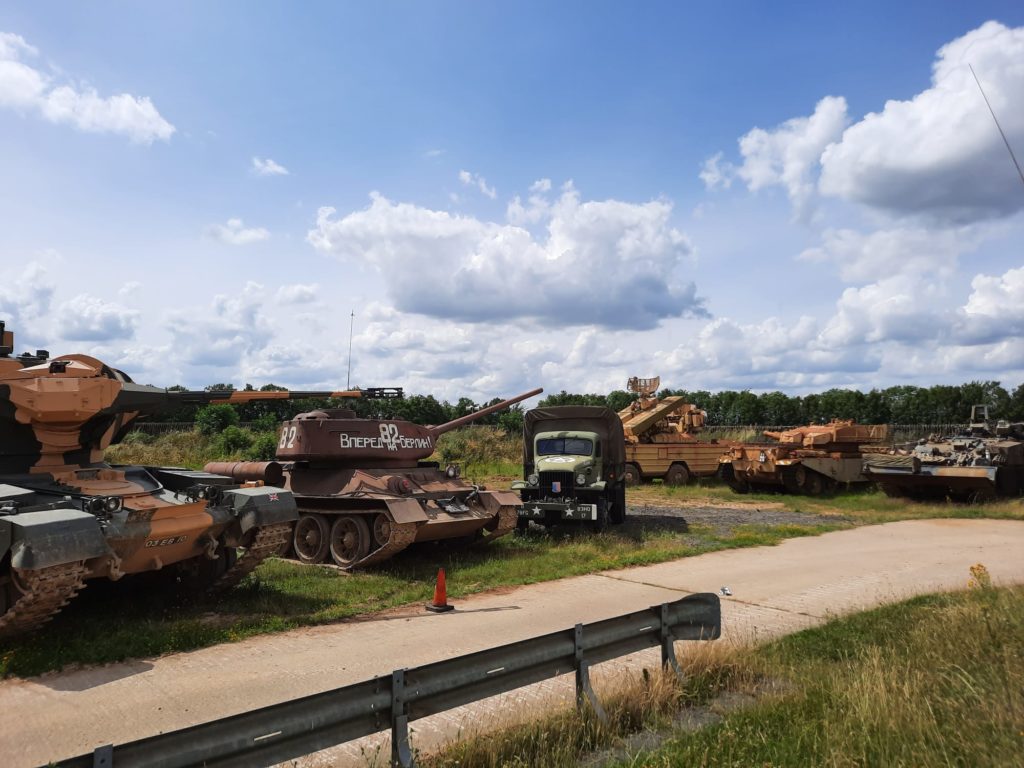
Land Warfare
It might seem a bit of a surprise to find a Land Warfare display at IWM Duxford. But, as well being a museum of military aviation, it’s also a big open space at the IWM’s disposal. There is no way they could display so many tanks and other military vehicles either at Lambeth or their other sites (the Churchill War Rooms, HMS Belfast or IWM North), so it is here that they have been sent. There is even a section out the back displaying additional land warfare vehicles outdoors, showing just what a surplus of items they must have.
Compared to the displays focusing on aircraft, Land Warfare relies heavily on dioramas to evoke military scenes. There are war-torn landscapes everywhere, complete with ruined buildings and mannequin soldiers. There are also deep-dive looks at the D-Day Landings, Monty (General Bernard Montgomery) and the Royal Anglian Regiment Museum.
Because the focus was on imagined scenes rather than personal stories, I found Land Warfare a bit more fun than I was expecting. By this point in the day I was starting to feel a little fatigued, though, so I didn’t spend much time looking at any one vehicle in particular and so probably won’t retain much from my time there. Land Warfare is the furthest exhibit from the entry point, so I don’t think all visitors make it here. There is a bus running back and forth, however, so you can arrange your day in any way you choose depending on your interests.
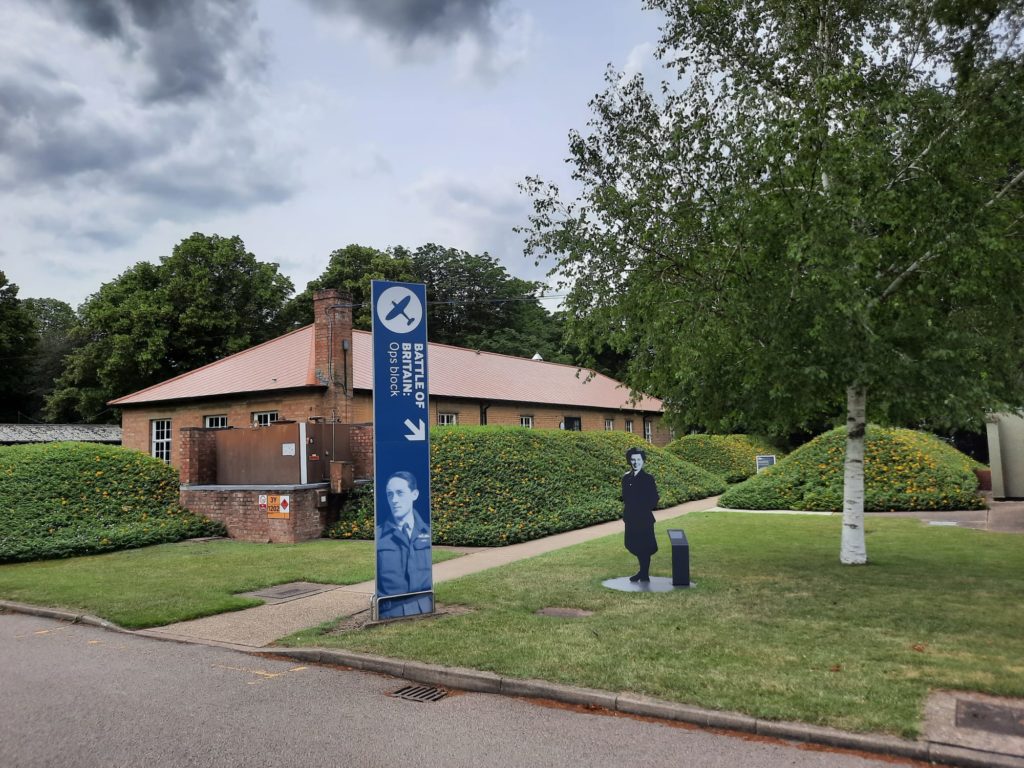
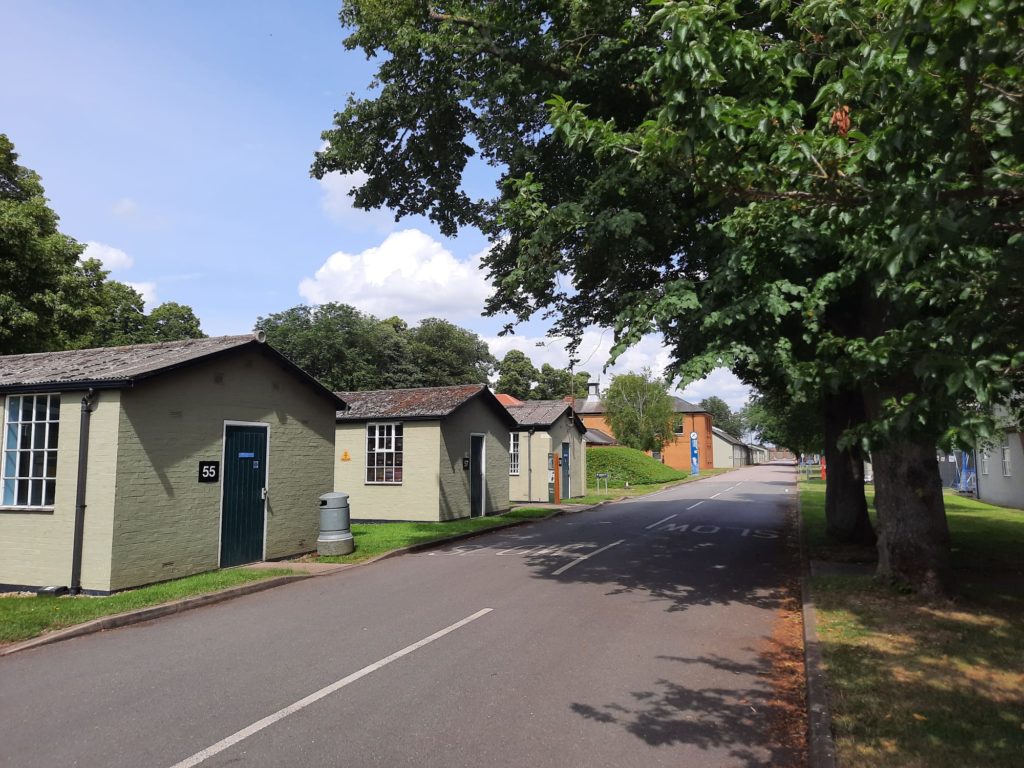
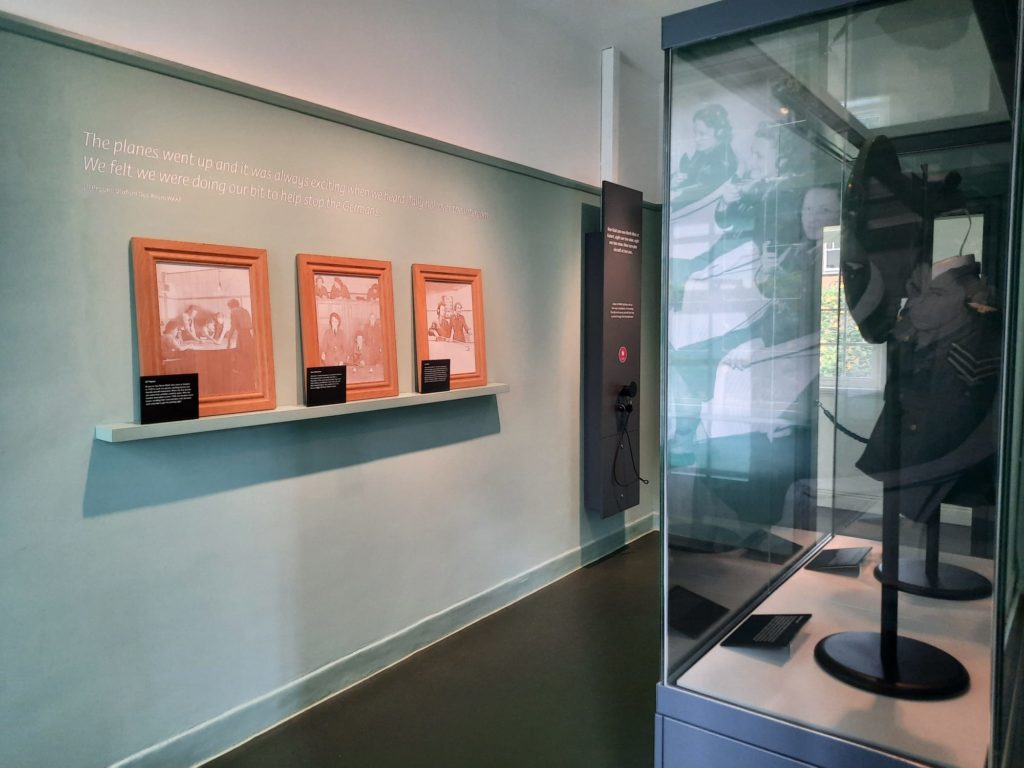
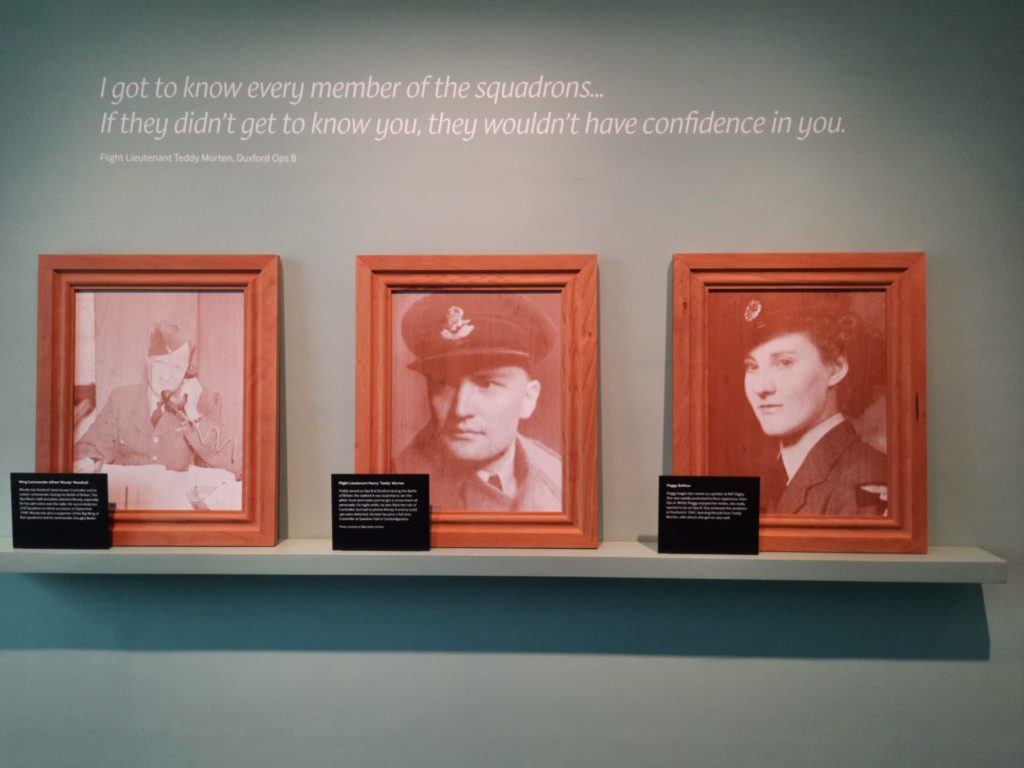
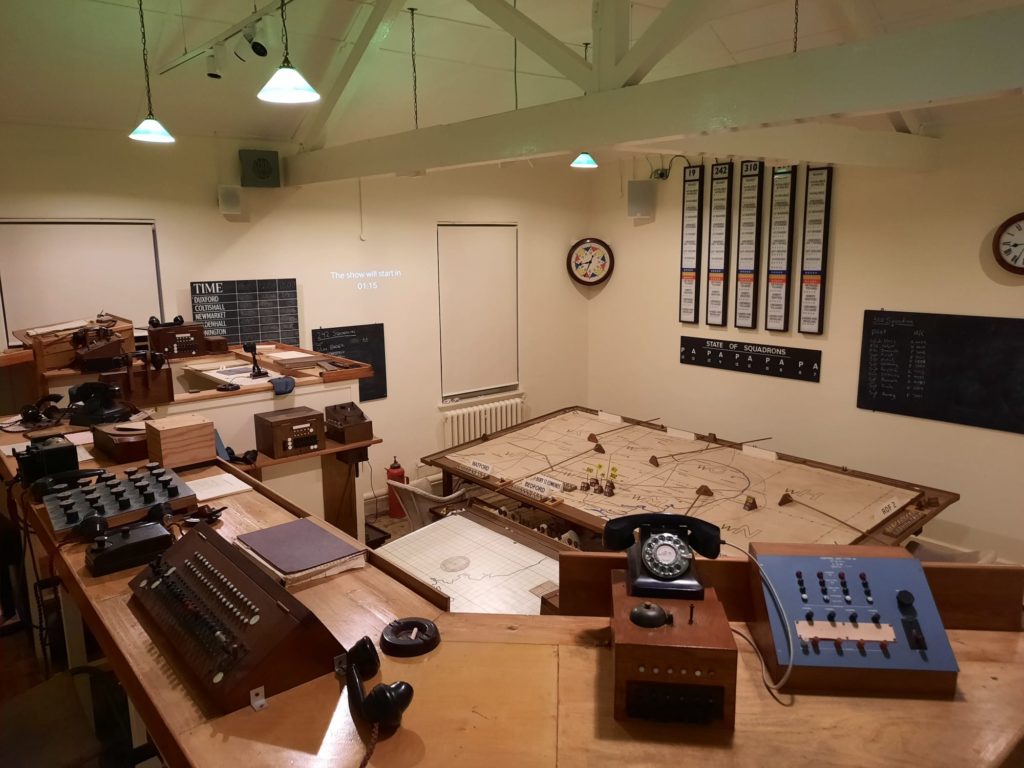
Battle of Britain: Ops Block
Now this one is good fun, and highly recommended by yours truly. As I mentioned previously, IWM Duxford was an RAF base at one point. Didn’t I also say it was an American Air Force base though? Well, it was both. The Americans took it over from 1943 to 1945. This display takes us back to a time when this was still the domain of the RAF: in fact, to the Battle of Britain.
There are several smaller buildings from this time, and the Operations Block (the nerve centre from which flights scrambled to combat enemy aircraft) now acts as a multi-media exhibit. Firstly visitors watch a video on the history of the period and Duxford’s role in it. Secondly you walk through some smaller rooms and meet some of the individuals involved. And thirdly you stand overlooking the Operations Room as it would have looked in 1940, and hear a soundtrack based on a German air attack in August of that year. It’s very evocative, and I’m presuming very popular in a nation which still sees the Battle of Britain as a key part of its identity.
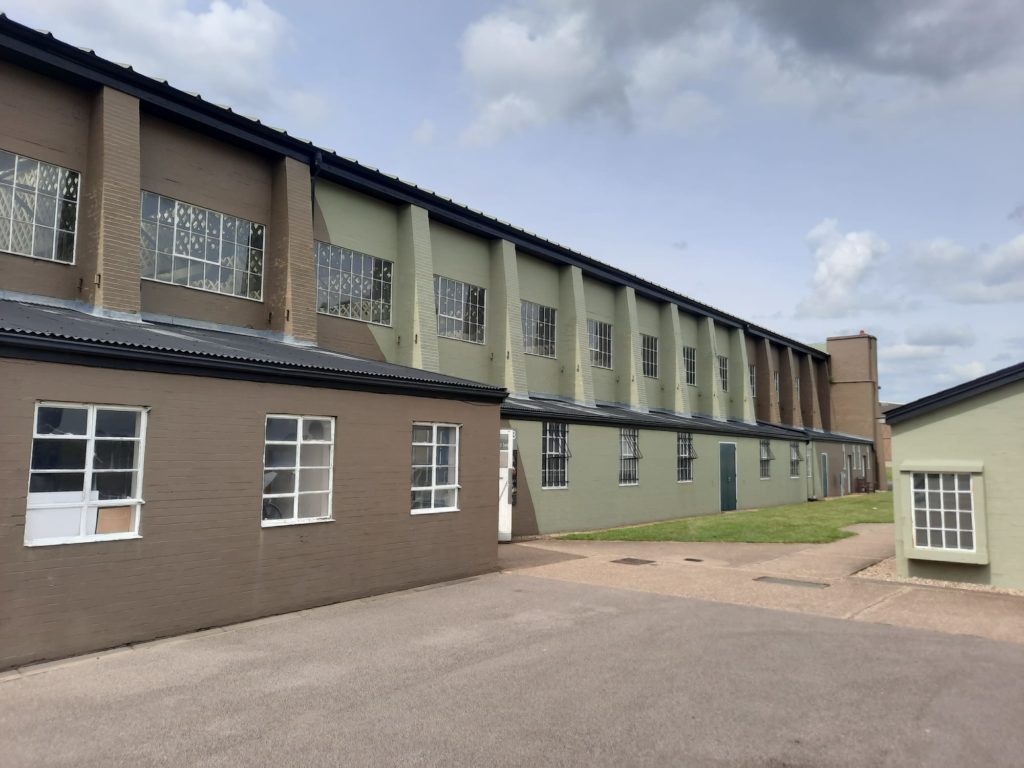
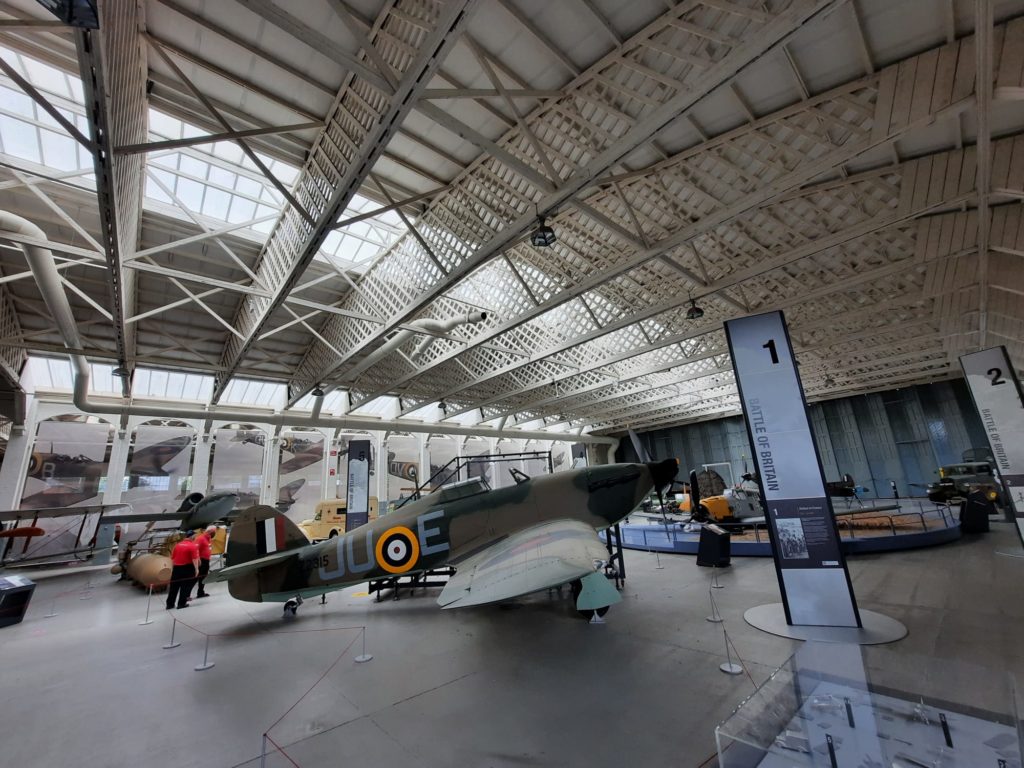
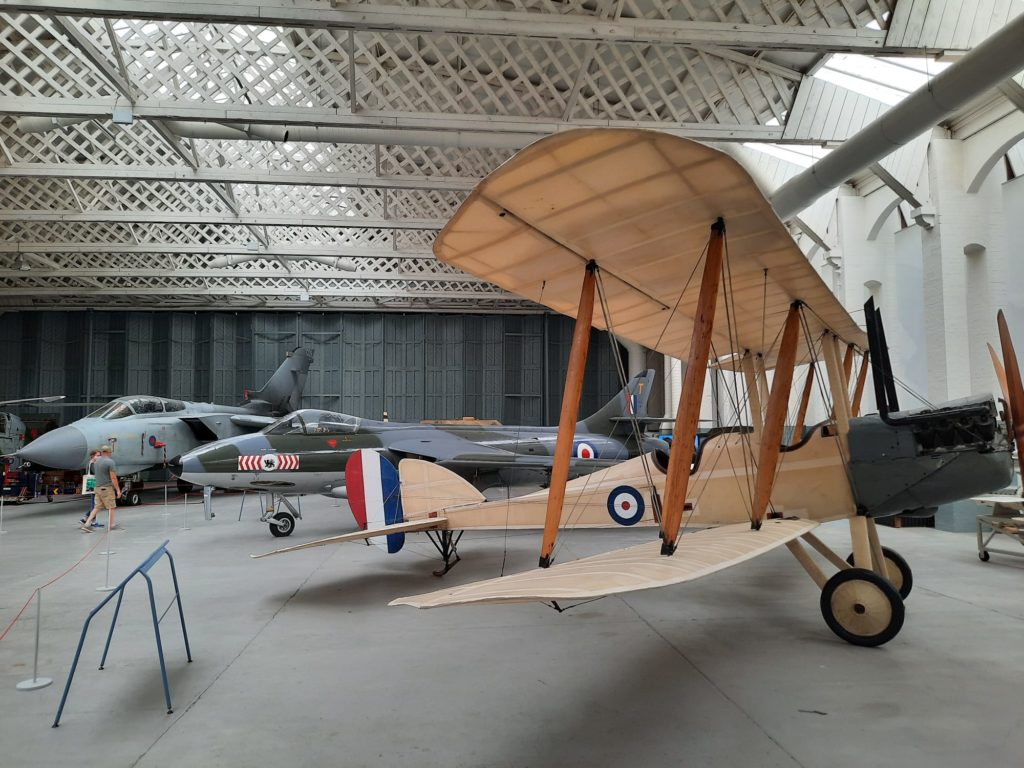
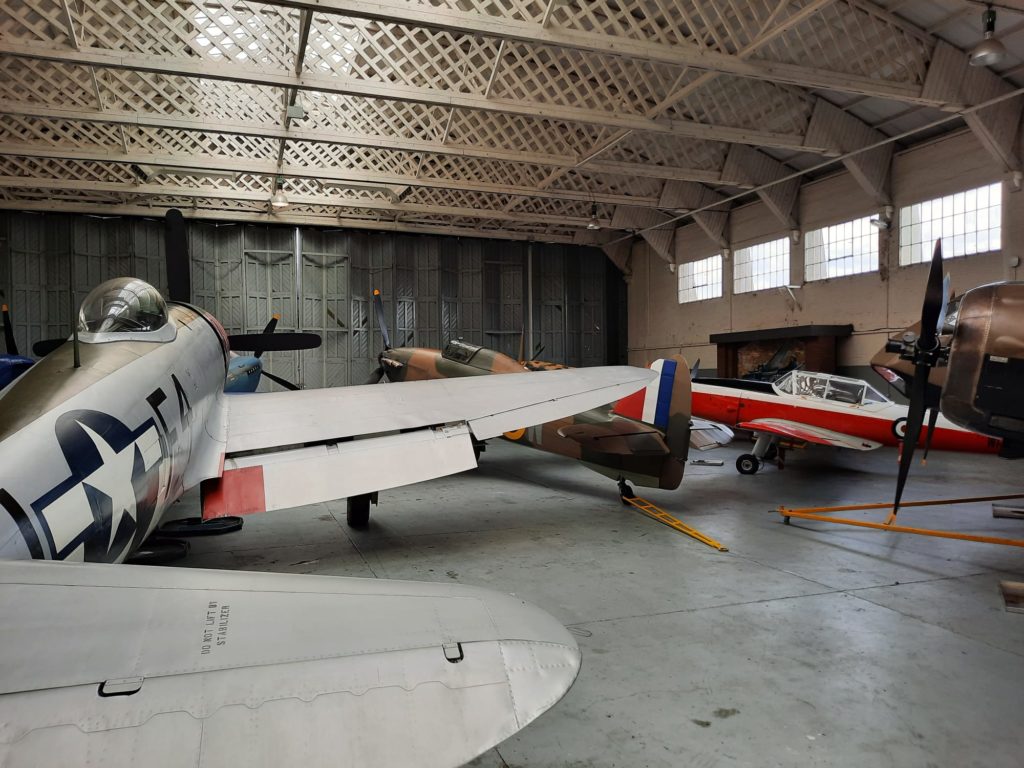
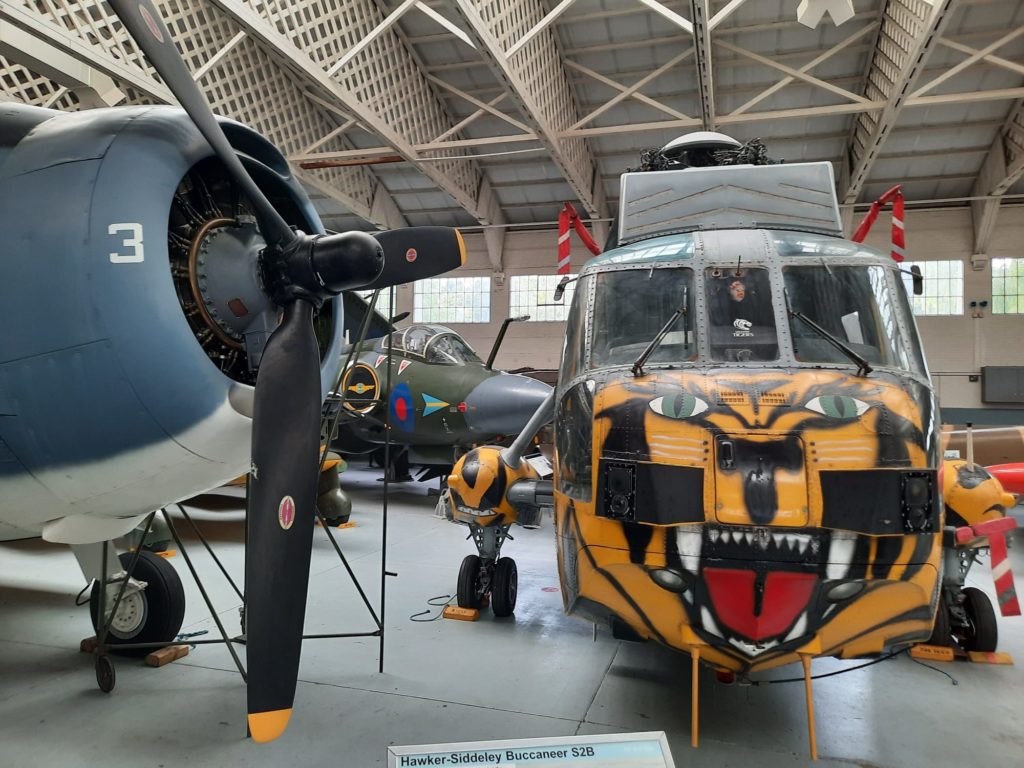
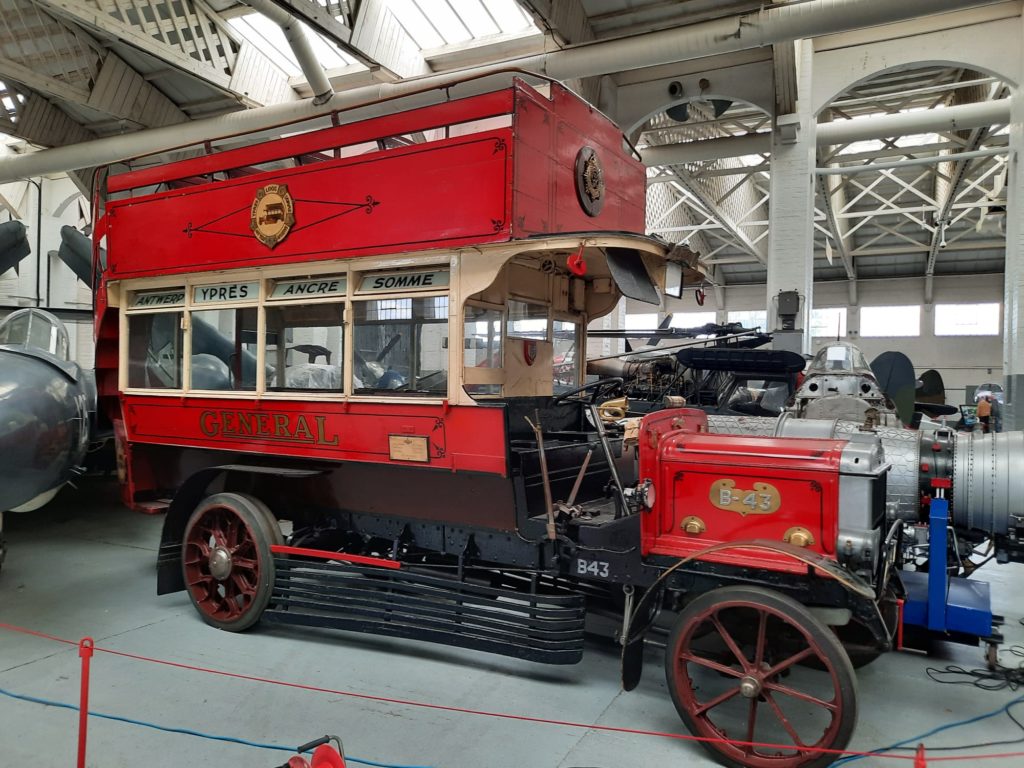
Battle of Britain / Air and Sea
I have grouped two whole hangars together here. Firstly because I was really getting tired by this point so my attention was flagging. And secondly because I think they achieve more or less the same thing. There are three WWI-era ‘Belfast truss’ hangars remaining at IWM Duxford, and two now display additional aircraft. The first is marketed as ‘The Battle of Britain’ but also contains Cold War-era planes, and the second is called Air and Sea, and so has things like boats, seaplanes, and planes designed for aircraft carriers.
Seeing the original hangars is nice. In addition, these are both pretty relaxed spaces where the point is just to wander around and look at the aircraft and other displays. I learned that if I’m rescued from a sinking boat, the helicopter crew might ask me to clap my hands to see how urgently I need medical attention. And I saw a captured WWII-era German aircraft, its propeller still bent out of shape by its crash landing. The bus used as WWI transport with the names of some of the destinations of soldiers it carried is particularly poignant.
These hangars are definitely a lot less flashy than other parts of IWM Duxford, but had their own charm. I also had some good chats with the volunteers working here. Aircraft and military history attract such passionate enthusiasts that I’m sure they have no shortage of volunteers. I found I got a lot more out of chatting to some of them than I did reading the panels and other official interpretation.
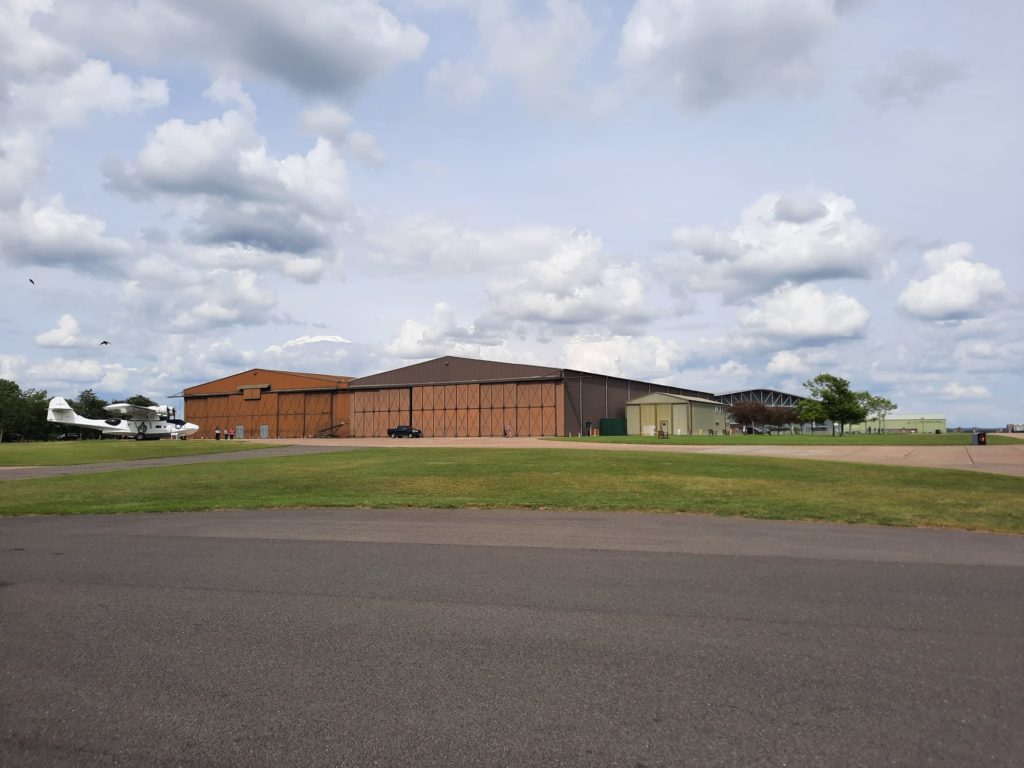
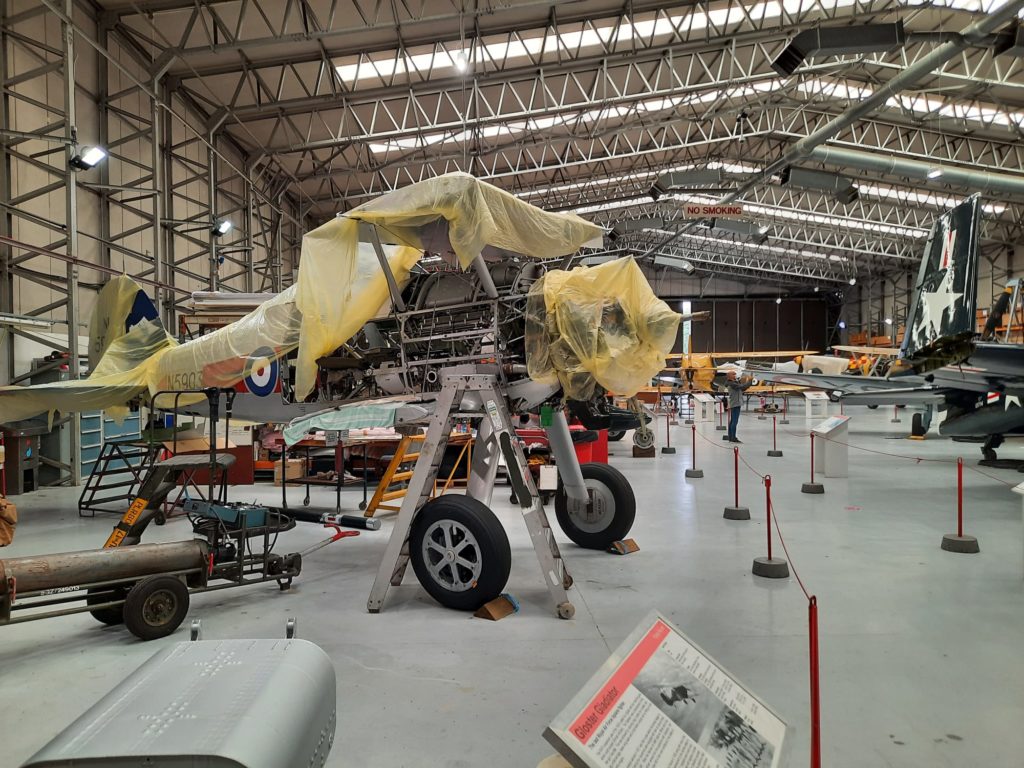
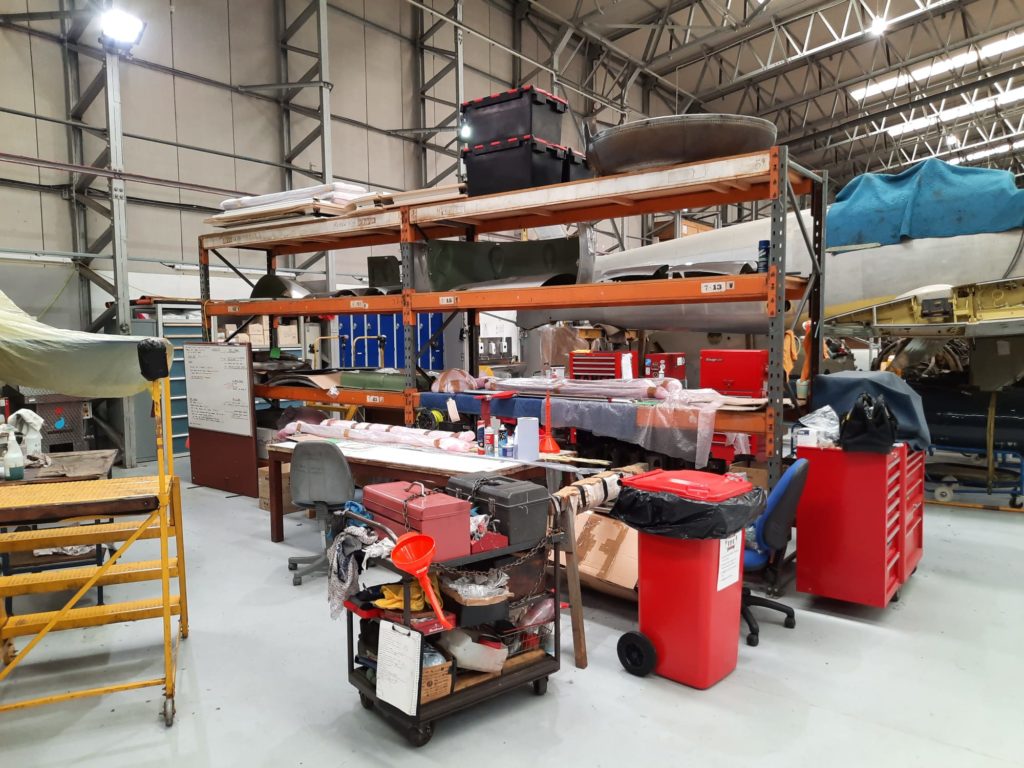
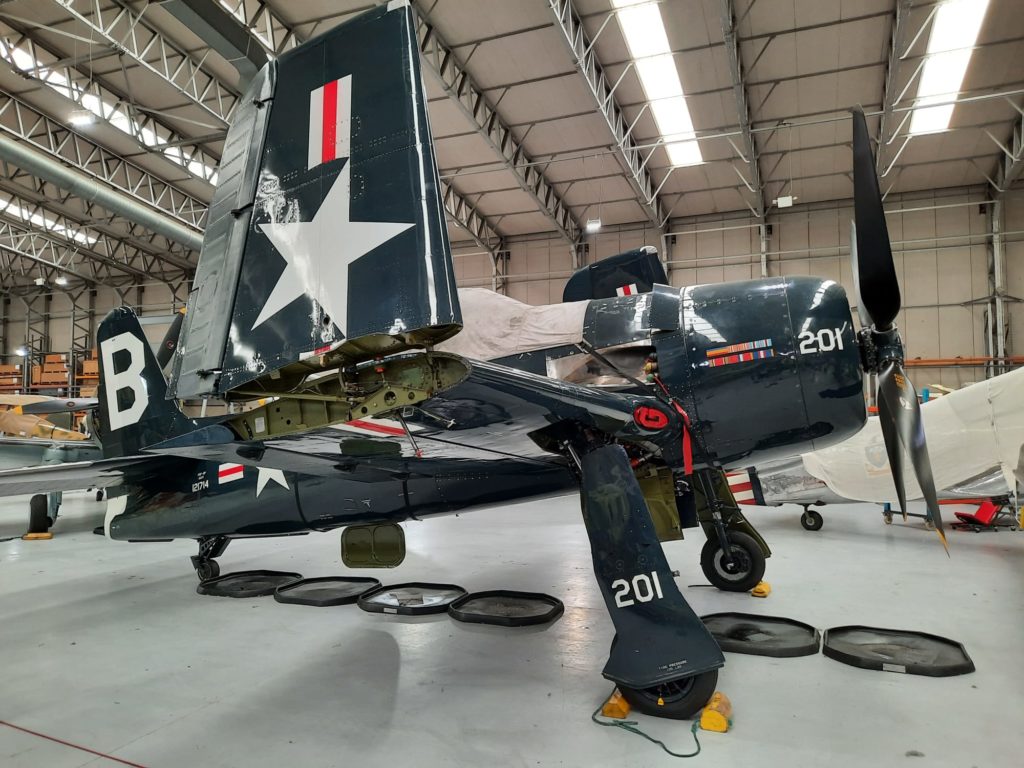
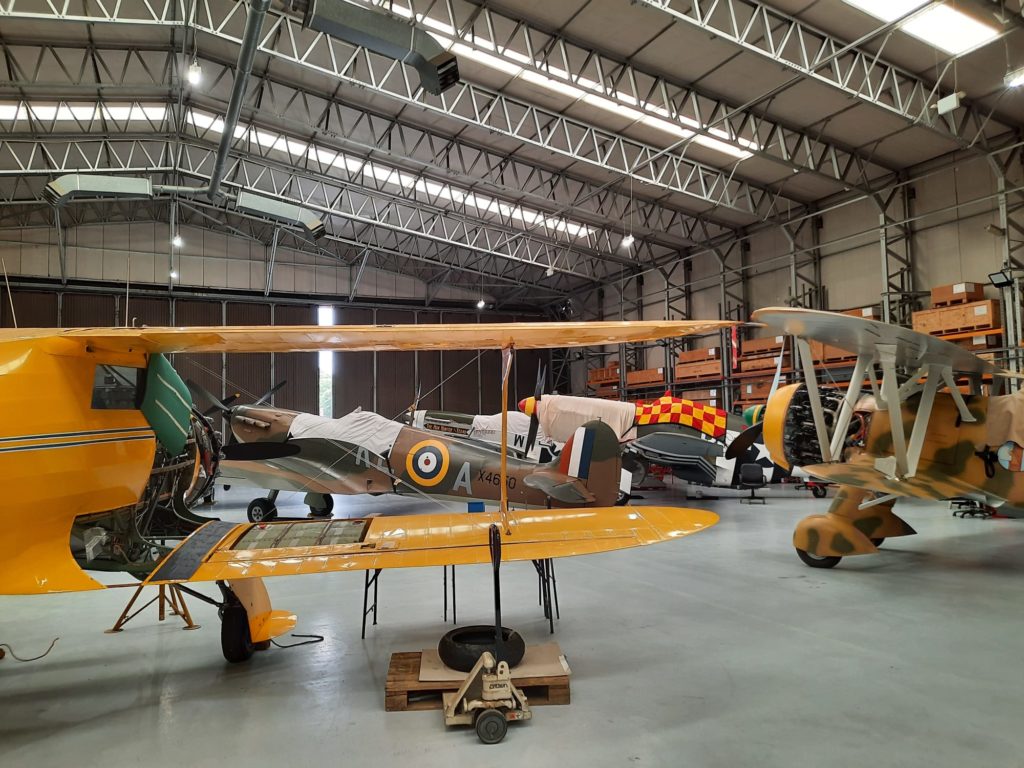
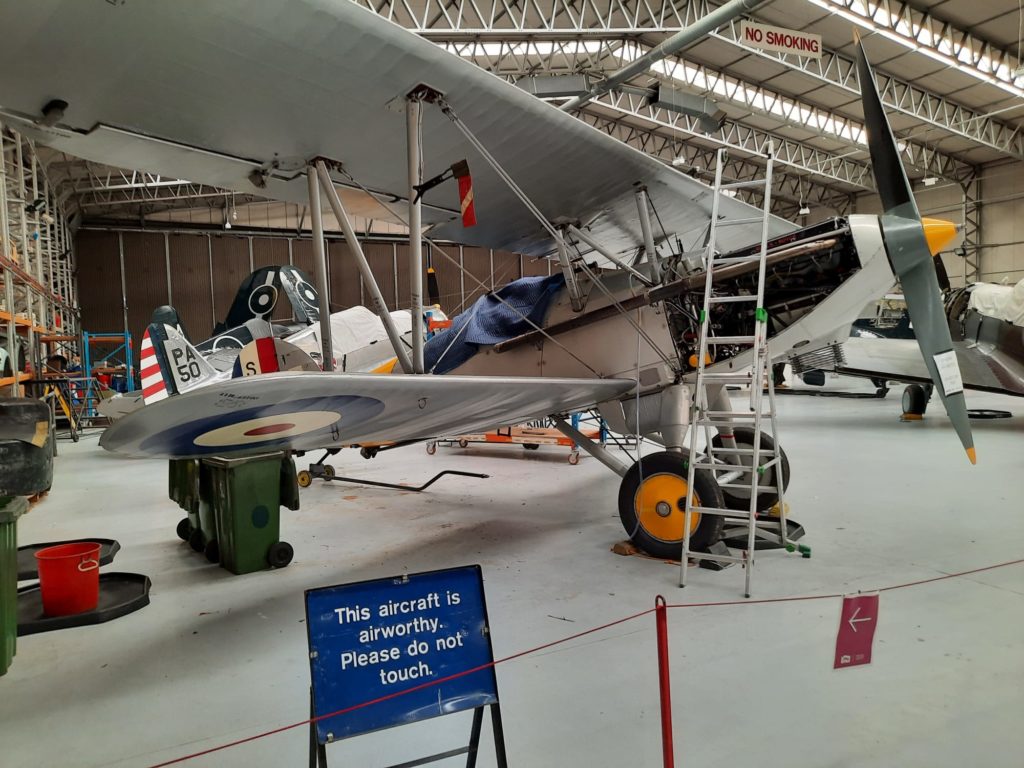
Flying Aircraft
For us the finale at IWM Duxford, as we worked our way back to the entrance, was the Flying Aircraft hangar. Here, aircraft owned privately or by partner organisations are maintained and restored. Many are airworthy, so it’s a chance to see up close some of the planes which take part in airshows. There is the feeling of a busy working aircraft hangar here; even at the end of the day we saw people working on engines and so on.
If you were much more of an aircraft expert or military history enthusiast than I am, I’m sure this would also be a great place to have stimulating conversations with very passionate people. As it was, I had my eye on a relaxing sit-down, so we had a look around but didn’t linger.
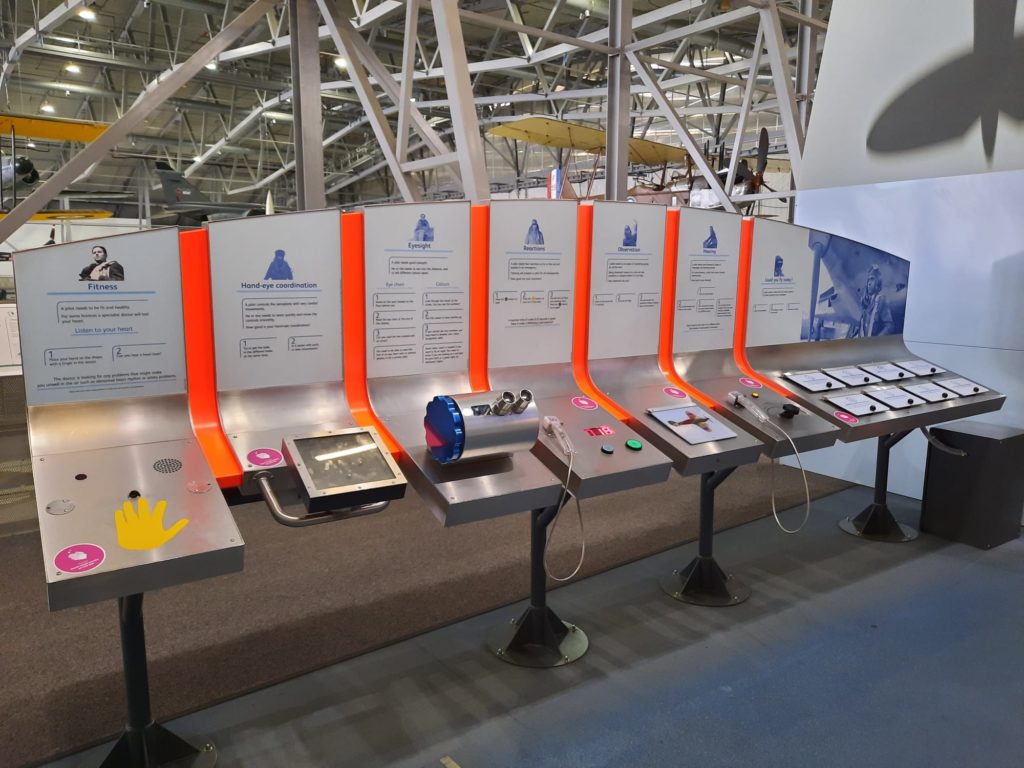
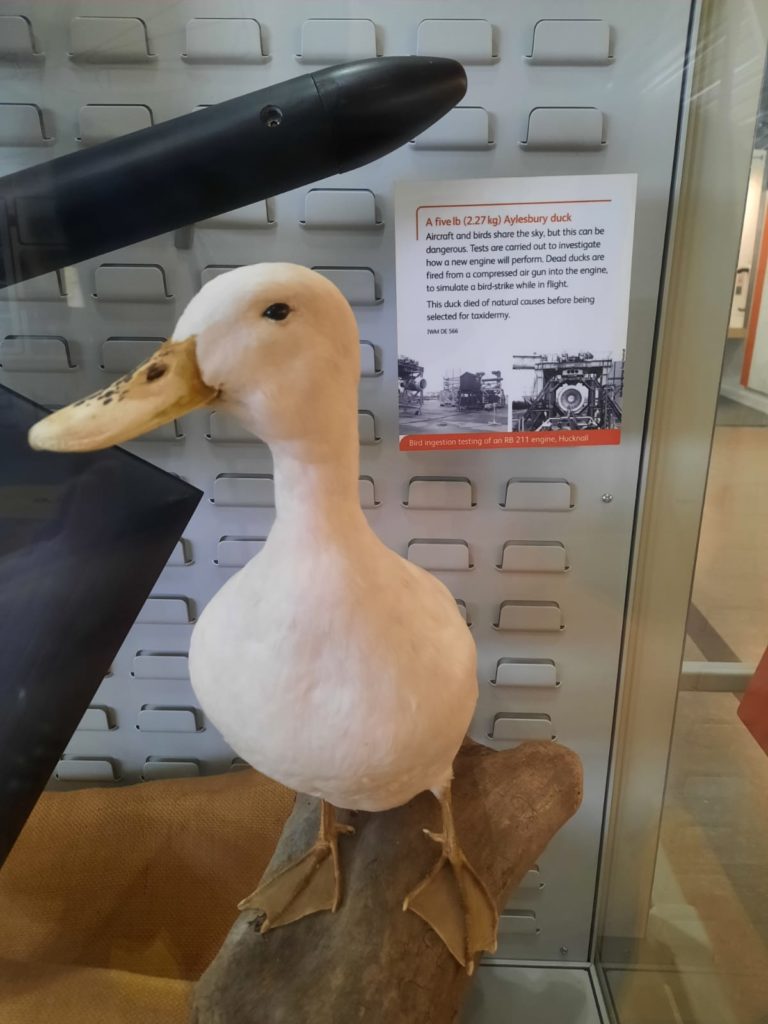
Final Thoughts
IWM Duxford is a great day out, but at the same time it is definitely a whole day out. Come with plenty of energy, curiosity, and comfortable shoes. Also come with a car if you can. The IWM Duxford website has details of a bus which stops right at the door. However, you have to get from Cambridge (or elsewhere) to a Park & Ride station to use it, and it’s very infrequent. We missed one by about 15 mins and there wasn’t another one for two hours. So taxis both ways it was!
What was my highlight, I hear you ask? Well it is illustrated in the two images just above. Right back at AirSpace, I had a lot of fun on the mezzanine floor. The bank of interactive exhibits is a series of tests to see if you could make it as a pilot. Eyesight, hearing, reflexes and so on. Fun competition for any age group. And it’s not every day you see a duck which has been guaranteed to have died of natural causes, so that appealed to my sense of the absurd and was also a highlight.
The point here is that you don’t have to be an expert to enjoy IWM Duxford. You don’t even have to be that interested in planes or military history. IWM Duxford is like several museums joined together, with enough space to include something for everyone. It must be a bit miserable in the pouring rain, but on a bright sunny day it is a very enjoyable daytrip.
On its own merits: 3.5/5
Implementing Covid measures: 5/5
Want more day trip inspiration? Sign up below for our weekly newsletter:
If you see this after your page is loaded completely, leafletJS files are missing.

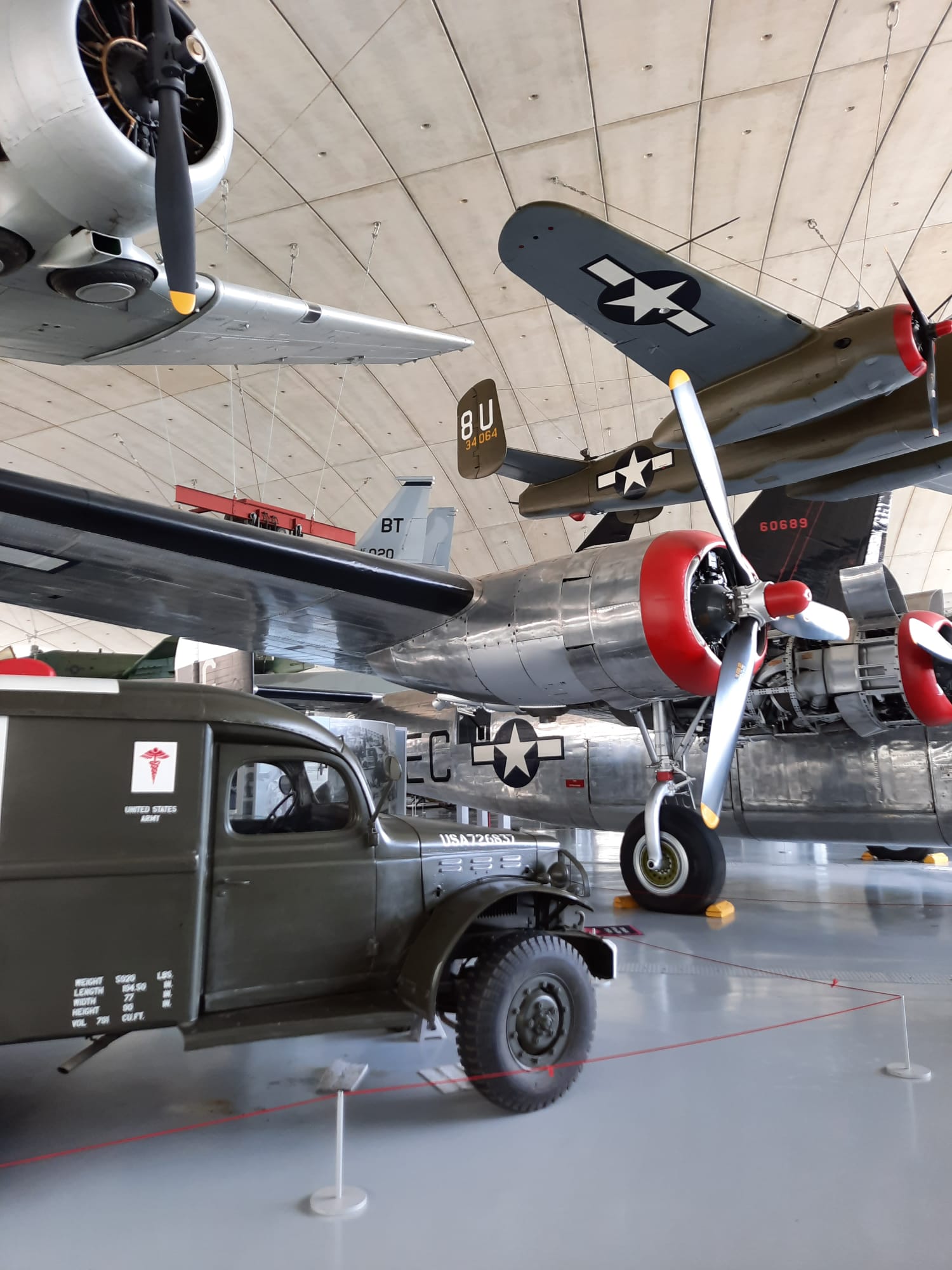
3 thoughts on “The Covid Diaries 85 – IWM Duxford”